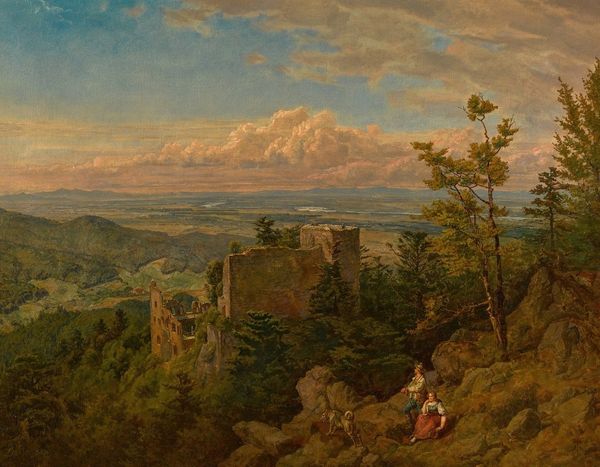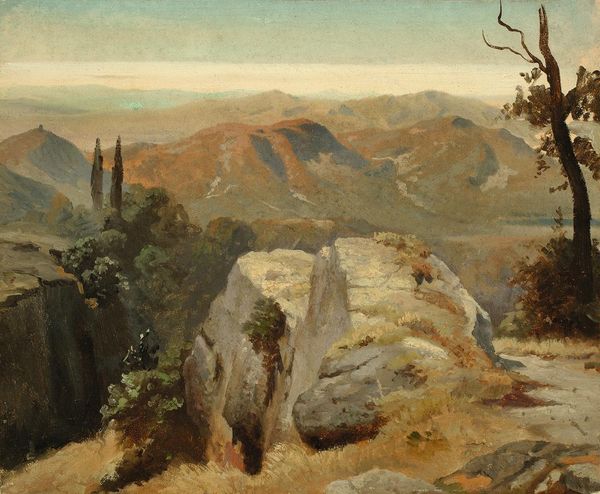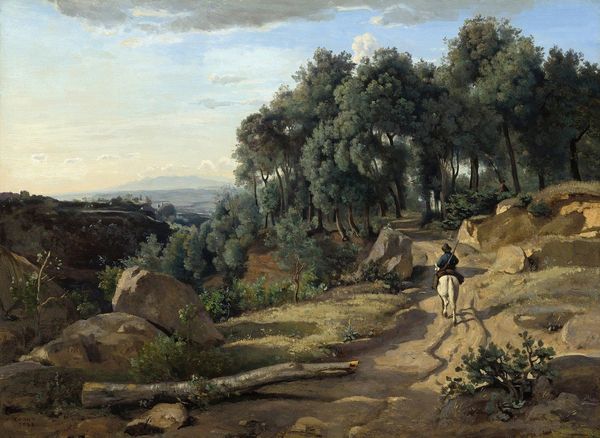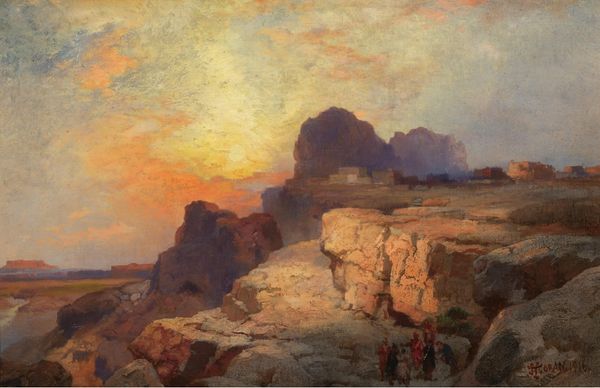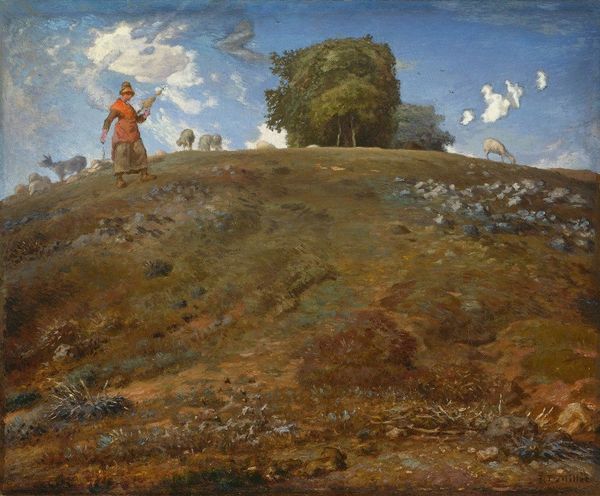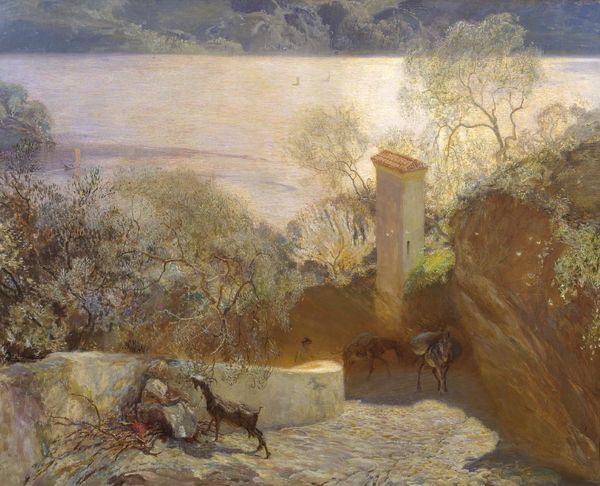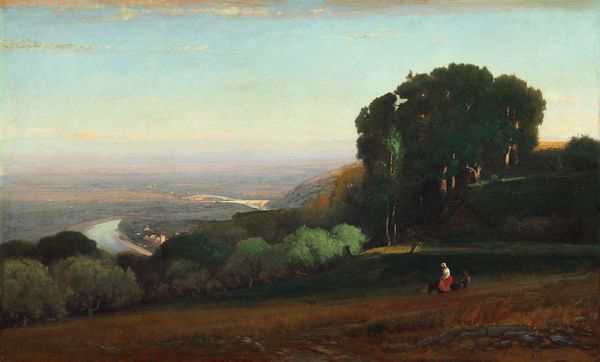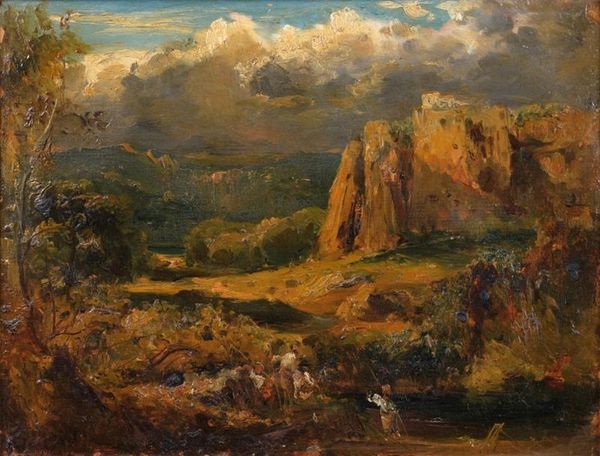
oil-paint
#
oil-paint
#
landscape
#
impressionist landscape
#
oil painting
#
romanticism
#
genre-painting
#
realism
Dimensions: 48.5 x 101.5 cm
Copyright: Public domain
Editor: This painting, called "Grazing in the Roman countryside," is an oil on canvas, by Aurelio Tiratelli. I'm really struck by the textures, especially the way he's handled the rocks and the sky. What can you tell me about it? Curator: Well, notice first how the artist presents rural labour not through the typical heroic lens, but instead focusing on the simple, almost monotonous act of grazing. This challenges the traditional hierarchy separating "high art" from the everyday, highlighting the economic underpinnings of this landscape. Consider the cost of pigments available and the type of canvas. Editor: So, the specific type of paint would be important? I always thought that artistic vision came first. Curator: Of course, the *idea* is important. But consider the social and economic conditions under which that vision came to be. Tiratelli chose oil paint—how does that decision speak to available resources or the intended audience for the piece? Who buys, displays, or consumes these types of images? Editor: Hmm. Maybe this painting is also commenting on the rise of industry and the changing value of labor, if people are paying attention to a rural scene? Curator: Precisely. And how might we view the shepherdess herself, considering the material conditions of her life versus the romanticized version often depicted? Notice the relative isolation of the figure: What does this positioning suggest about the economics of pastoral life and landscape itself? Editor: I see, now that you point that out. It's less about the picturesque scene and more about the realities of this person’s labor and what is left out, so to speak. Curator: Exactly! And perhaps now you’ll never look at an “innocent” landscape quite the same way. I find my perspective changed again!
Comments
No comments
Be the first to comment and join the conversation on the ultimate creative platform.



